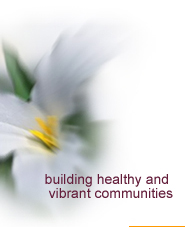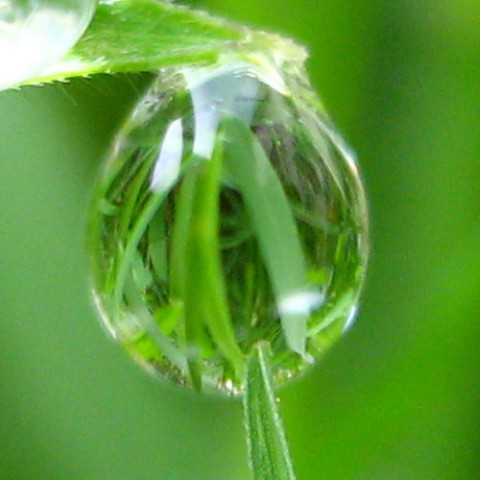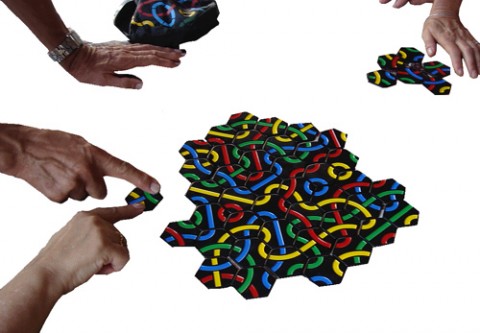October 28, 2010
 What do you look for up front to suggest that a collaborative endeavor is on the right track? This is the question that former IISC colleague and current VP of Programs at Grantmakers for Effective Organizations, Courtney Bourns, and I are charged with answering today. Our audience and partners in this endeavor are a group of community grantmaking committee members convened by the Ontario Trillium Foundation. The attendees want to know what to look for in applications and out in the field (‘beyond the grant”) as hints of future success.
What do you look for up front to suggest that a collaborative endeavor is on the right track? This is the question that former IISC colleague and current VP of Programs at Grantmakers for Effective Organizations, Courtney Bourns, and I are charged with answering today. Our audience and partners in this endeavor are a group of community grantmaking committee members convened by the Ontario Trillium Foundation. The attendees want to know what to look for in applications and out in the field (‘beyond the grant”) as hints of future success.
This is an intriguing and challenging question, especially given the fact that the signs of success are often in places we do not think to look and of course there are never any guarantees. I certainly look forward to an engaging conversation with this group, and these are the thoughts I am prepared to share with folk at this point: Read More
July 1, 2010
For the better part of the last year and a half, my colleagues Ashley Welch and John McGah and I have been moving forward an IA/IISC cross-sectoral practice to bring Interaction methods + to the support of sustainability endeavors. Our early meetings around this budding practice included conversations about how best to frame leadership development for sustainability. We arrived at the graphic above, which combines what we see as the core elements needed for leadership to embrace and enroll others in sustainable pursuits.
With a foundation (watermark, if you will) of content knowledge about what sustainability is, the three elements are as follows:
• Systems Thinking (Seeing) – This is all about helping individual leaders and collective leadership see the whole, to understand that nothing stands in isolation, and that we must have a deeply felt sense of the interconnectedness of phenomena in order to make truly informed decisions. We take both our inspiration and instruction in this realm from the likes of the Sustainability Institute, the Center for Whole Communities, and The Elumenati.
• Self-Awareness (Being) – What we do is informed by who and how we are in the world. Awareness of our own beliefs, mental maps, and inherent tendencies is a powerful lever for making the sustainability shift, for aligning thought behind action. Self-awareness might also be cast as mindfulness, or the ability to be present to what is. Here we build upon our existing work around the inner side of leadership with the contributions of the Pachamama Alliance and John Milton.
• Collaborative Capacity (Doing) – With the whole in mind and awareness of our inner state, leadership will have a greater understanding of the need to work collectively toward more sustainable lifestyles and ways of doing business. Collaborative skill is key, including knowing how to frame sustainability efforts, create the right conditions for innovation, build agreement, structure decision-making, and design life-affirming experiences for diverse stakeholders. This is the heart and soul of the Interaction Method, and it is supplemented by the work of Keith Sawyer, CRED, and the many pioneers of large group methods and network-building.
Another key element and overlay for all of these is leadership’s ability to understand and navigate power dynamics as they play out in systems, in ourselves, and in our chosen methods for working together.
Eager to hear your reactions, tweaks, and additions.
May 13, 2010

|Photo by Flowery *L*u*z*a*|http://www.flickr.com/photos/luchilu/747345256|
For the past few weeks, in a series of Thursday posts, we’ve addressed what it takes to tap the full potential of collaboration to shift to more environmentally sustainable ways of living and working. We’ve explored the importance of bringing diverse systemic perspectives together and developing shared identities and values as a way of achieving greater ecological intelligence and commitment. And as a friend of mine says, you can bring great groups together with the best of intentions and still end up with nothing or a mess. So what else can we put into place to help ensure we reach the sustainable ends we seek?
Read More
May 6, 2010

|Photo by jordigraells|http://www.flickr.com/photos/jordigraells/2097554407|
“In dealing with complex problems, our ability may be bounded, but our diversity is not. Diversity – be it based on identity, training or vocation — may be our best asset.”
– Scott E. Page
In last Thursday’s post, we talked about the importance of developing a shared identity among stakeholders, and doing this early in a collaborative process, as a way of developing greater commitment to collective interests as well as bolstering the inclination to think about and act in accordance with more long-term risks and benefits. Clearly more needs to be said about the WHO that is engaged in this work and how this aligns with sustainability.
Read More
 What do you look for up front to suggest that a collaborative endeavor is on the right track? This is the question that former IISC colleague and current VP of Programs at Grantmakers for Effective Organizations, Courtney Bourns, and I are charged with answering today. Our audience and partners in this endeavor are a group of community grantmaking committee members convened by the Ontario Trillium Foundation. The attendees want to know what to look for in applications and out in the field (‘beyond the grant”) as hints of future success.
What do you look for up front to suggest that a collaborative endeavor is on the right track? This is the question that former IISC colleague and current VP of Programs at Grantmakers for Effective Organizations, Courtney Bourns, and I are charged with answering today. Our audience and partners in this endeavor are a group of community grantmaking committee members convened by the Ontario Trillium Foundation. The attendees want to know what to look for in applications and out in the field (‘beyond the grant”) as hints of future success.
